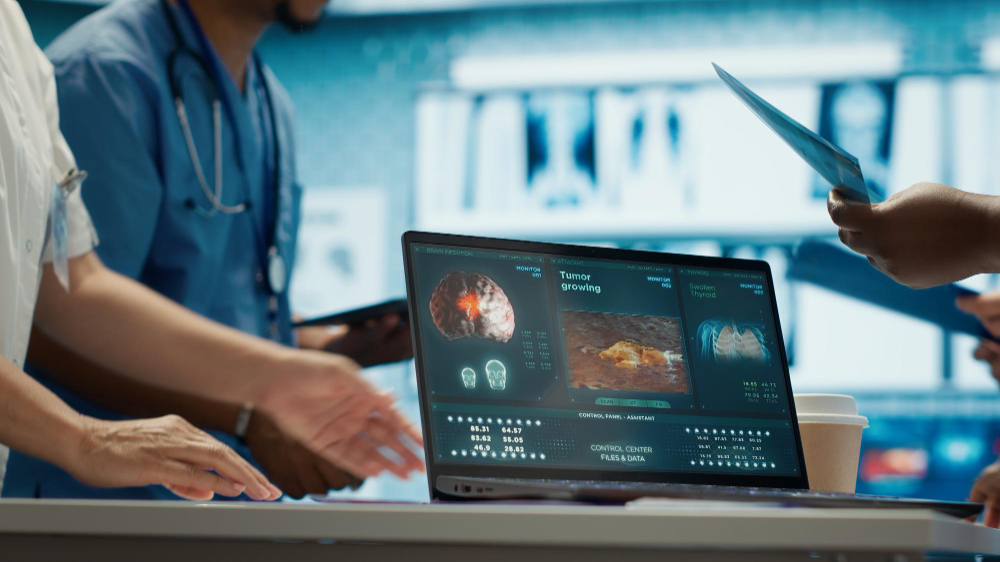
Healthcare systems around the world are under increasing pressure. The aging population, rise in chronic diseases, and a persistent shortage of qualified professionals have stretched healthcare services to their limits. As a result, staff are often forced to work in overloaded environments where maintaining care quality becomes an everyday challenge.
In this context, digitalization in healthcare is more than a trend — it’s a transformative force. By automating repetitive tasks, improving clinical workflows, and reducing the risk of human error, digital tools can help optimize resources and free up valuable time for direct patient care. Efficiency is no longer just about doing more in less time, but about achieving sustainable, high-quality care delivery.
What Does Clinical Efficiency Mean?
In clinical settings, efficiency refers to delivering safe, high-quality care while making the best possible use of available human, technological, and material resources. It doesn’t simply mean working faster — it means streamlining healthcare processes, eliminating redundancies, and achieving consistent clinical outcomes.
Efficiency can be measured by multiple indicators: reduced time spent on administrative tasks, fewer documentation errors, faster response to clinical complications, and better coordination across multidisciplinary teams. Digital health solutions like Clinicgram support this goal by automating critical workflows while integrating smoothly into existing care practices.
Repetitive Tasks That Undermine Healthcare Staff Efficiency
Everyday workflows in hospitals and clinics are filled with manual, repetitive tasks that consume time and lead to inefficiencies. Below are some of the most common pain points that impact clinical staff productivity:
Duplicate Documentation
One of the biggest time drains for clinicians is having to enter the same information across different systems or formats. Professionals often take notes on paper, then later transcribe them into digital systems that don’t communicate with each other. This not only increases administrative workload but also elevates the risk of errors.
Digital clinical documentation tools like Clinicgram allow for structured data collection, image capture, and real-time updates all in one place — eliminating redundancy, improving traceability, and speeding up access to clinical records.
Manual Visual Monitoring
The visual assessment of wounds or lesions is often subjective and lacks consistency. Comparing patient progress over time can be difficult, and detecting early signs of complications may be delayed due to variability between clinicians.
Digital platforms enable standardized image capture and the use of AI-powered wound monitoring to identify changes more objectively. These tools help clinicians respond faster and more accurately, improving patient outcomes.
Unstructured Professional Communication
Efficient decision-making in clinical care requires clear and timely communication between different healthcare professionals. Unfortunately, vital information is often shared via informal means like sticky notes, phone calls, or emails — all of which lack integration with the patient record.
By centralizing communication and enabling real-time collaboration within the same digital platform, tools like Clinicgram reduce misunderstandings and ensure that everyone involved has access to the same up-to-date information.
Subjective Clinical Evaluations
Clinical evaluations based solely on professional intuition can result in inconsistent care. Without standardized tools, prioritizing cases or making evidence-based decisions becomes harder, especially in busy hospital environments.
Digital protocols and automated scoring systems bring consistency to the evaluation process. They reduce reliance on subjective judgment and provide alerts when patient conditions deviate from safe parameters.
Digitalization: A Path Toward Safer, Smarter, and Faster Care
The adoption of healthcare digitalization tools leads to tangible improvements in both operational and clinical performance. From streamlined workflows to improved data accessibility, digital systems enable healthcare teams to:
- Reduce time spent on administrative burdens
- Minimize clinical errors
- Enhance patient safety
- Improve care continuity and team coordination
By investing in digital healthcare platforms, institutions can create a more agile, sustainable, and patient-centered system — ready to meet the demands of modern medicine.
Clinicgram: Enhancing Healthcare Staff Efficiency Through Digital Tools
Clinicgram is a digital platform designed to improve wound documentation, clinical evaluation, and communication between healthcare professionals. It supports staff by offering features such as:
- Visual documentation with photos, diagrams, and thermal mapping
- AI-assisted detection of wound risks and complications
- Centralized access to patient histories and clinical notes
- Customizable protocols for consistent, data-driven care
By automating time-consuming processes and integrating directly into existing workflows, Clinicgram helps reduce burnout, improve clinical decision-making, and enhance overall staff efficiency — particularly in areas such as wound care, home care, and chronic patient management.
Conclusion: More Efficiency Means More Time for What Matters Most
Efficiency in healthcare isn’t about doing more with less. It’s about working smarter — with better tools, clearer communication, and structured processes that support professionals in delivering quality care.
Solutions like Clinicgram demonstrate how digital innovation in healthcare can relieve staff from routine tasks and empower them to focus on what truly matters: caring for their patients.

Need to improve staff efficiency and streamline clinical workflows? Contact us to request a free demo of Clinicgram.
Please rate this post



